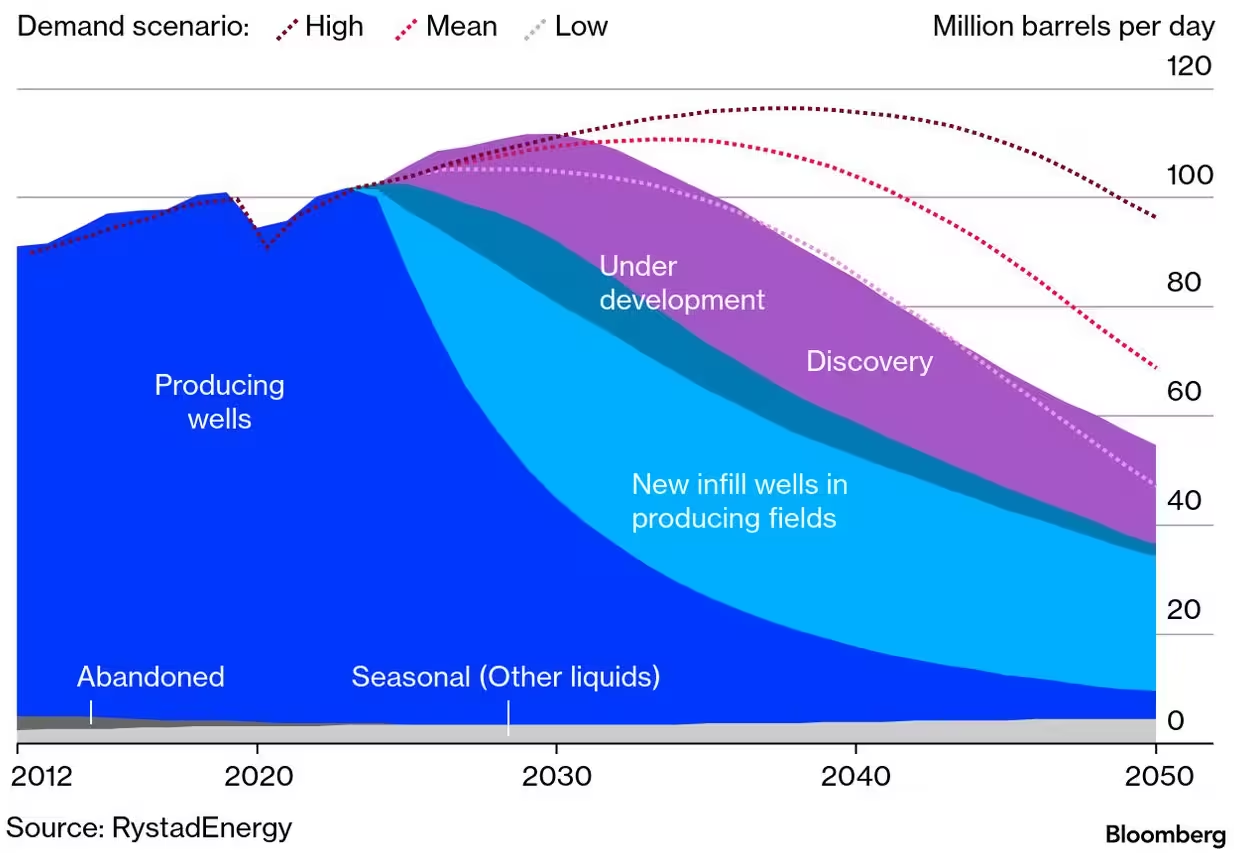Rystad: World’s proven oil reserves equal 14 years of production
26 August 2025
The global amount of proven oil reserves (so-called P1 reserves) will cover only 14 years of oil supply at the current extraction rates, according to latest research by Rystad Energy, released this month. As reserve replacements from new oil discoveries are expected to be only about 10%, global oil production is on track for a massive shortfall within the next decade.

In 2024, 30.1 billion barrels of oil were extracted globally, while new oil discoveries have been estimated at 1.8 billion barrels—equivalent to a replacement ratio of 6%.
While the global amount of discovered, recoverable oil resources (Rystad’s 2PC category) has increased by 5 billion barrels over the past year, this net increase was driven primarily by the delineation of upside potential in Argentina’s Vaca Muerta play and the Permian Delaware basin in Texas and New Mexico—rather than by new discoveries.
Global recoverable oil resources including estimates for undiscovered fields (Rystad’s 2PCX category) stabilized at approximately 1.5 trillion barrels. The most significant revision over the last 10 years has been in yet-to-find resources, where Rystad has reduced its projection by 456 billion barrels. This is due to a steep decline in frontier exploration, unsuccessful shale developments outside the Americas, and a doubling in offshore costs over the past five years. Rystad expects reserve replacements from new conventional oil projects to be less than 30% of production over the next five years, while exploration would replace only about 10%.
A total of 1,572 billion barrels of crude oil were produced historically from 1900 through 2024. Today, the world’s proven oil reserves equal only 14 years of production. If future global oil demand increases, supply will likely struggle to meet demand, even at attractive, high prices for producers—unless the energy transition accelerates and reduces oil demand—Rystad concluded.
“Full extraction of these oil resources will require oil prices stabilizing at higher levels and further estimate increases will require new technologies to lower production costs,” said Per Magnus Nysveen, Rystad’s Chief Analyst. “Over the next decades, the capital needed will likely not be available to meet continuously increasing oil demand, service prices could skyrocket, and there will likely be limited appetite for innovations to sustain such high emissions from oil.”
If oil demand rises over the next few decades, global recoverable resources will not offer the supply needed to meet it, creating a constrained economic environment. As a result, Rystad does not expect oil demand to continue to grow steeply towards 2050, with the company’s analysis concluding that the worst-case warming scenarios evaluated by the Intergovernmental Panel on Climate Change (IPCC) will not materialize. Referring to Rystad’s highest scenario, which leads to a 2.5°C rise in temperature, future CO2 emissions from fossil fuels will be limited to 2,000 Gt of CO2, of which 900 Gt will come from coal, 600 Gt from oil, and 500 Gt from natural gas and natural gas liquids (NGLs). This is 500 Gt less CO2 than the IPCC’s mid-scenario, which leads to 2.8°C of warming.
Source: Rystad Energy